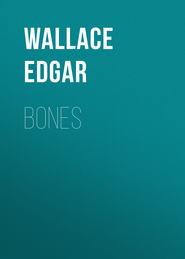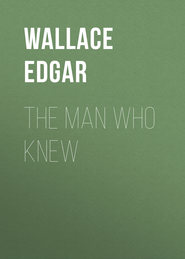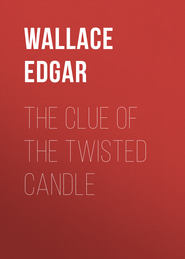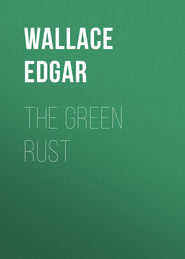По всем вопросам обращайтесь на: info@litportal.ru
(©) 2003-2024.
✖
The Daffodil Mystery
Настройки чтения
Размер шрифта
Высота строк
Поля
Carrymore Mansions, where Odette Rider lived, were, as has been described, a block of good-class flats, the ground floor being given over to shops. The entrance to the flats was between two of these, and a flight of stairs led down to the basement. Here were six sets of apartments, with windows giving out to the narrow areas which ran parallel to the side streets on either side of the block.
The centre of the basement consisted of a large concrete store-room, about which were set little cubicles or cellars in which the tenants stored such of their baggage, furniture, etc., as they did not need. It was possible, he discovered, to pass from the corridor of the basement flat, into the store room, and out through a door at the back of the building into a small courtyard. Access to the street was secured through a fairly large door, placed there for the convenience of tenants who wished to get their coal and heavy stores delivered. In the street behind the block of flats was a mews, consisting of about a dozen shut-up stables, all of which were rented by a taxicab company, and now used as a garage.
If the murder was committed in the flat, it was by this way the body would have been carried to the mews, and here, too, a car would attract little attention. Inquiries made amongst employees of the cab company, some of whom occupied little rooms above their garages, elicited the important information that the car had been seen in the mews on the night of the murder—a fact, it seemed, which had been overlooked in the preliminary police investigations.
The car was a two-seater Daimler with a yellow body and a hood. This was an exact description of Thornton Lyne's machine which had been found near the place where his body was discovered. The hood of the car was up when it was seen in the mews and the time apparently was between ten and eleven on the night of the murder. But though he pursued the most diligent inquiries, Tarling failed to discover any human being who had either recognised Lyne or observed the car arrive or depart.
The hall porter of the flats, on being interviewed, was very emphatic that nobody had come into the building by the main entrance between the hours of ten and half-past. It was possible, he admitted, that they could have come between half-past ten and a quarter to eleven because he had gone to his "office," which proved to be a stuffy little place under the stairs, to change from his uniform into his private clothes before going home. He was in the habit of locking the front door at eleven o'clock. Tenants of the mansions had pass-keys to the main door, and of all that happened after eleven he would be ignorant. He admitted that he may have gone a little before eleven that night, but even as to this he was not prepared to swear.
"In fact," said Whiteside afterwards, "his evidence would lead nowhere. At the very hour when somebody might have come into the flat—that is to say, between half-past ten and a quarter to eleven—he admits he was not on duty."
Tarling nodded. He had made a diligent search of the floor of the basement corridor through the store-room into the courtyard, but had found no trace of blood. Nor did he expect to find any such trace, since it was clear that, if the murder had been committed in the flat and the night-dress which was wound about the dead man's body was Odette Rider's, there would be no bleeding.
"Of one thing I am satisfied," he said; "if Odette Rider committed this murder she had an accomplice. It was impossible that she could have carried or dragged this man into the open and put him into the car, carried him again from the car and laid him on the grass."
"The daffodils puzzle me," said Whiteside. "Why should he be found with daffodils on his chest? And why, if he was murdered here, should she trouble to pay that tribute of her respect?"
Tarling shook his head. He was nearer a solution to the latter mystery than either of them knew.
His search of the flat completed, he drove to Hyde Park and, guided by Whiteside, made his way to the spot where the body was found. It was on a gravelled sidewalk, nearer to the grass than to the road, and Whiteside described the position of the body. Tarling looked round, and suddenly uttered an exclamation.
"I wonder," he said, pointing to a flower-bed.
Whiteside stared, then laughed.
"That curious," he said. "We seem to see nothing but daffodils in this murder!"
The big bed to which Tarling walked was smothered with great feathery bells that danced and swayed in the light spring breezes.
"Humph!" said Tarling. "Do you know anything about daffodils, Whiteside?"
Whiteside shook his head with a laugh.
"All daffodils are daffodils to me. Is there any difference in them? I suppose there must be."
Tarling nodded.
"These are known as Golden Spurs," he said, "a kind which is very common in England. The daffodils in Miss Rider's flat are the variety known as the Emperor."
"Well?" said Whiteside.
"Well," said the other slowly, "the daffodils I saw this morning which were found on Lyne's chest were Golden Spurs."
He knelt down by the side of the bed and began pushing aside the stems, examining the ground carefully.
"Here you are," he said.
He pointed to a dozen jagged stems.
"That is where the daffodils were plucked, I'd like to swear to that. Look, they were all pulled together by one hand. Somebody leaned over and pulled a handful."
Whiteside looked dubious.
"Mischievous boys sometimes do these things."
"Only in single stalks," said Tarling, "and the regular flower thieves are careful to steal from various parts of the bed so that the loss should not be reported by the Park gardeners."
"Then you suggest—"
"I suggest that whoever killed Thornton Lyne found it convenient, for some reason best known to himself or herself, to ornament the body as it was found, and the flowers were got from here."











